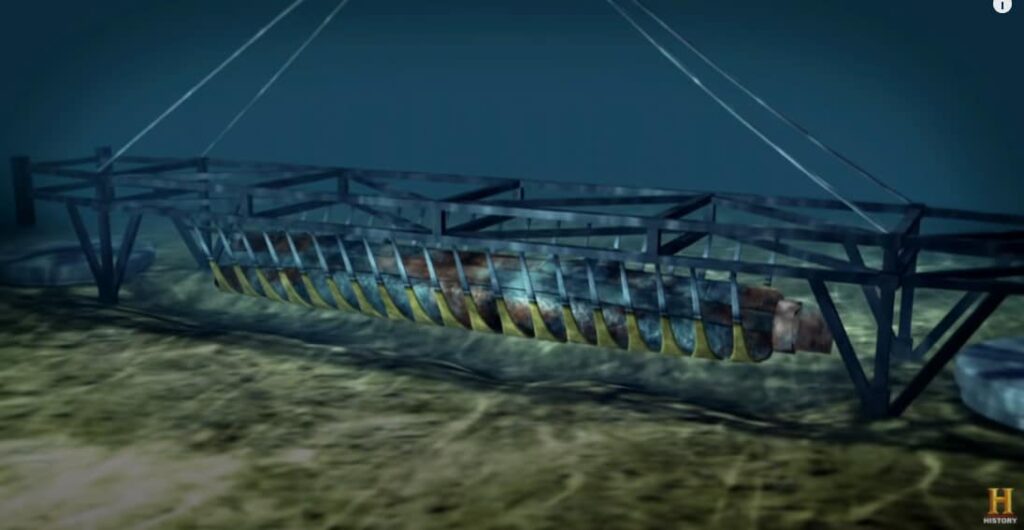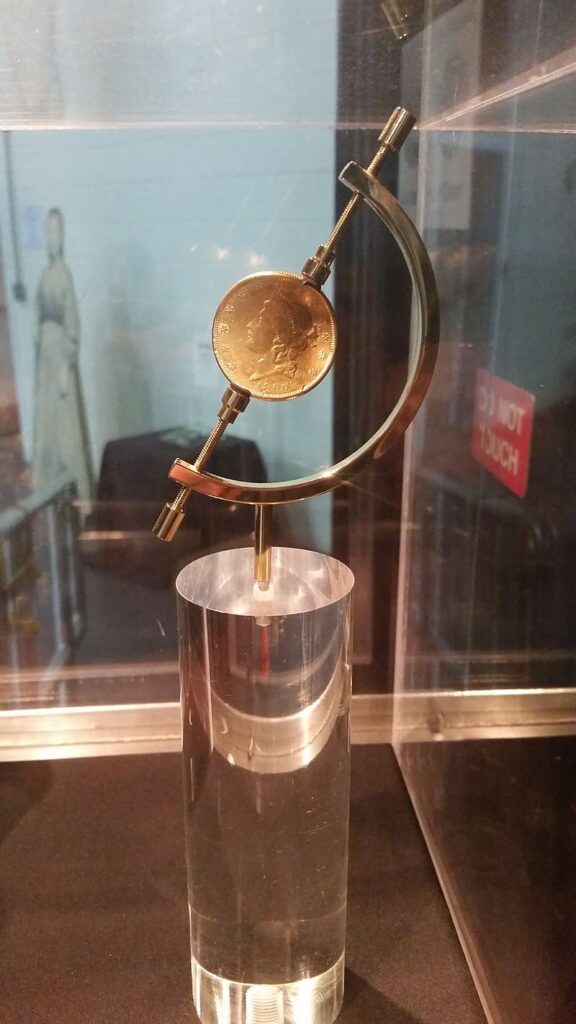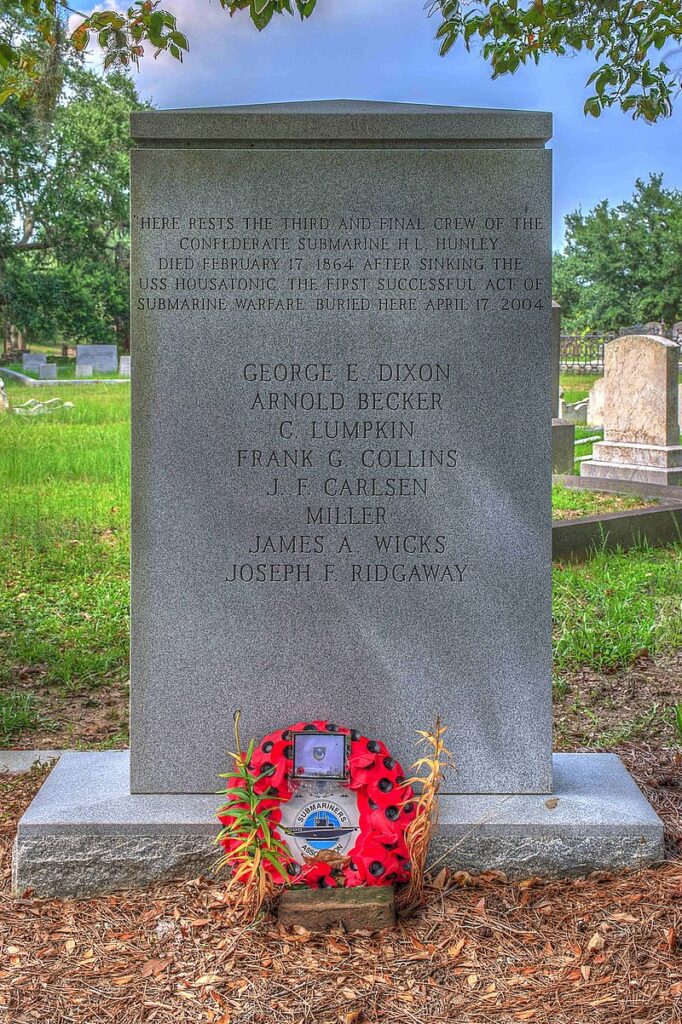Discovering the Sunken Combat Sub H.L. Hunley
It was February 17, 1864 when the eight-man crew of the submarine H.L. Hunley entered the history books by successfully sinking the USS Housatonic. The murky waters surrounding Charleston Harbor would hold the secret of what happened to the courageous crew for over 130 years. On May 3, 1995, the founder of the National Underwater and Marine Agency (NUMA), Clive Cussler and his team, located the Hunley roughly four miles off the coast of Sullivan's Island under 30 feet of water. The Hunley had been found.
“Let’s bring the boys home.”
This became the mantra of those working to raise her from the bottom. Clive Cussler said, "It's so unique. There isn't a shipwreck in the world, anything like it. They can find a submarine or a u boat, but it's not the same." There was so much mystery surrounding the disappearance of the Hunley that they had to raise her very carefully to preserve not only the bodies inside, but also any evidence that might explain what happened that fateful day. NUMA kept it very quiet so that it could be properly done.

They knew nothing about the internal construction and had discovered that the rivets on the outside were corroded. The fragility of the submarine created great concern for breakage as it was lifted from the bottom. Recovery experts crafted a plan to lift the sub. The surrounding sediment was removed, and then two 18' round suction pods were lowered to create platforms to land a steel cage measuring 55 x 10 feet. Then they inserted 12" wide fabric straps under the sub to cradle it and distribute the weight. In all, 33 lifting straps were used. The whole 44-foot sub rested on the support straps as it was lifted with a crane to the surface and placed on a platform barge.
As the Hunley was being brought to the surface, Maria Jacobsen, Senior Archaeologist on the project shared, "People were screaming and tooting their horns—very excited. And then the sub came up. And you could have heard a pin drop, nobody said anything. But it was like hundreds of people just went quiet, in one second. It was amazing. I think people were... it struck them for the first time, that you’re bringing a submarine up and that eight men inside the sub, this is a solemn moment. And then, people started cheering."
The Hunley was moved for conservation and restoration to the working lab at the Warren Lasch Conservation Center at the former Charleston Navy Yard, in North Charleston, South Carolina. It was placed in a massive tank of sodium hydroxide to prevent further decay. The sub was encased in 1,200 pounds of concretion, a thick layer of sand, sea life, rust and silt that had to be slowly chipped away to reveal the surface.
The Hunley Crew
When they were able to open the submarine, it was filled with sediment that needed to be carefully examined. Several hull plates were removed so that the remains of the crew and any artifacts could be accessed. Each of the crew members were found just as they would have been at their individual stations, with no broken bones. The conning towers and the bilge pump indicated the crew did not take action to escape. While there are several theories as to how the crew died, many believe that they were hit with a blast wave as a result of their close proximity to the USS Housatonic when it exploded. At approximately 20 feet from the blast, it is highly likely the men were incapacitated or already dead due to fatal blast trauma.
In 2004, the crew were given a proper burial at Magnolia Cemetery in Charleston, South Carolina. Tens of thousands of people attended including some 6,000 reenactors and 4,000 civilians wearing period clothing. Color guards from all five branches of the U.S. armed forces—wearing modern uniforms—were also in the procession. * There are no photos of the men that entered the Hunley on that fatal day, but their faces were forensically reconstructed to give us an idea of what they might have looked like.
Artifacts and a Legend
The H.L. Hunley is a time capsule unlike anything else. After the removal of the bodies, many things were discovered: a hammer, oil can, gold pocket watch, canteen, Navy buttons, a fragile silk scarf, a used matchstick, pocketknife, binoculars, signal lantern, Captain George Dixon's beautiful gold jewelry and his $20 gold coin.

There is a romantic legend associated with Captain Dixon’s gold coin. Inscribed with "Shiloh April 6, 1862 My life Preserver G. E. D." on the sanded-down reverse side, it was his lucky coin. Dixon is said to have been given the gold coin by his sweetheart, Queenie Bennett. She asked him to carry it for good luck and as a token of her affection. Dixon kept the coin always with him, and at the Battle of Shiloh it was in his trousers pocket. During the fierce fighting on April 6, 1862, Dixon was struck in the upper thigh by a minié ball. When he examined the wound, he discovered the bullet had struck the coin directly in the center, bending the coin but saving his leg by absorbing much of the impact. * This legend was proved true when the coin was discovered just as described, and Dixon’s hip bone revealed a healed injury.
The bravery of these eight men was truly unrivaled. Of the previous Hunley crews, 13 of the 16 had perished. They knew the risks but boarded their submarine anyway. The sailors that gave the ultimate sacrifice were:
Lieutenant George E. Dixon (Commander) (of Alabama or Ohio)
Frank Collins (of Virginia)
Joseph F. Ridgaway (of Maryland)
James A. Wicks (North Carolina native living in Florida)
Arnold Becker (of Germany)
Corporal Johan Frederik Carlsen (of Denmark)
C. Lumpkin (probably of the British Isles)
Augustus Miller (probably a former member of the German Artillery)

You can learn more about them, their mission, and their submarine in person or online at https://www.hunley.org.


Remarkable reconstruction of some of our most important history; thank you, Clive Cussler, his team and all who assisted in this grand endeavor. May the souls of those eight brave men, forever, rest in peace.
I totally love your stories. THANK YOU
You are welcome!! Thank you for supporting us.
This piece of history is a great example of the importance of keeping record of the historic events of our great US. The recent removal of great people of our nations having their statutes removed because of times in our nation that were not great for many, but that history is what has made the US what it is.
Thank God for service Bless America Thank you for this information about this event.
Oh my goodness! Clive Cussler was my all time favorite author and I remember him discussing this event after the fact. Thank you for this article and about the history of the H.L. Hunley and it's raising. Another fine article from Thin Line News.
Has anyone shopped at Vapor Up Vape Shop located in 6371 Westheimer Road?
Is anyone here in a position to recommend Plus Size Knickers and G-Strings? Thanks xxx
You have made some really good points there. I looked on the net to find out more about the issue and found most individuals will go along with your views on this web site.
Does anybody know whether I can buy Just Delta 8 Gummies (justdeltastore.com) from Vaholl Vapors, 2916 Ramsey St #101, Fayetteville, NC, 28301?